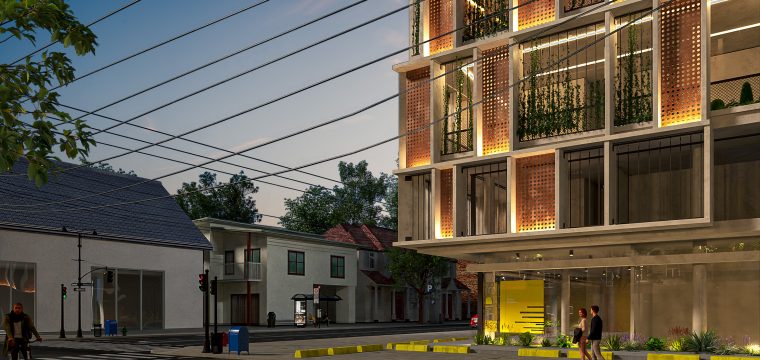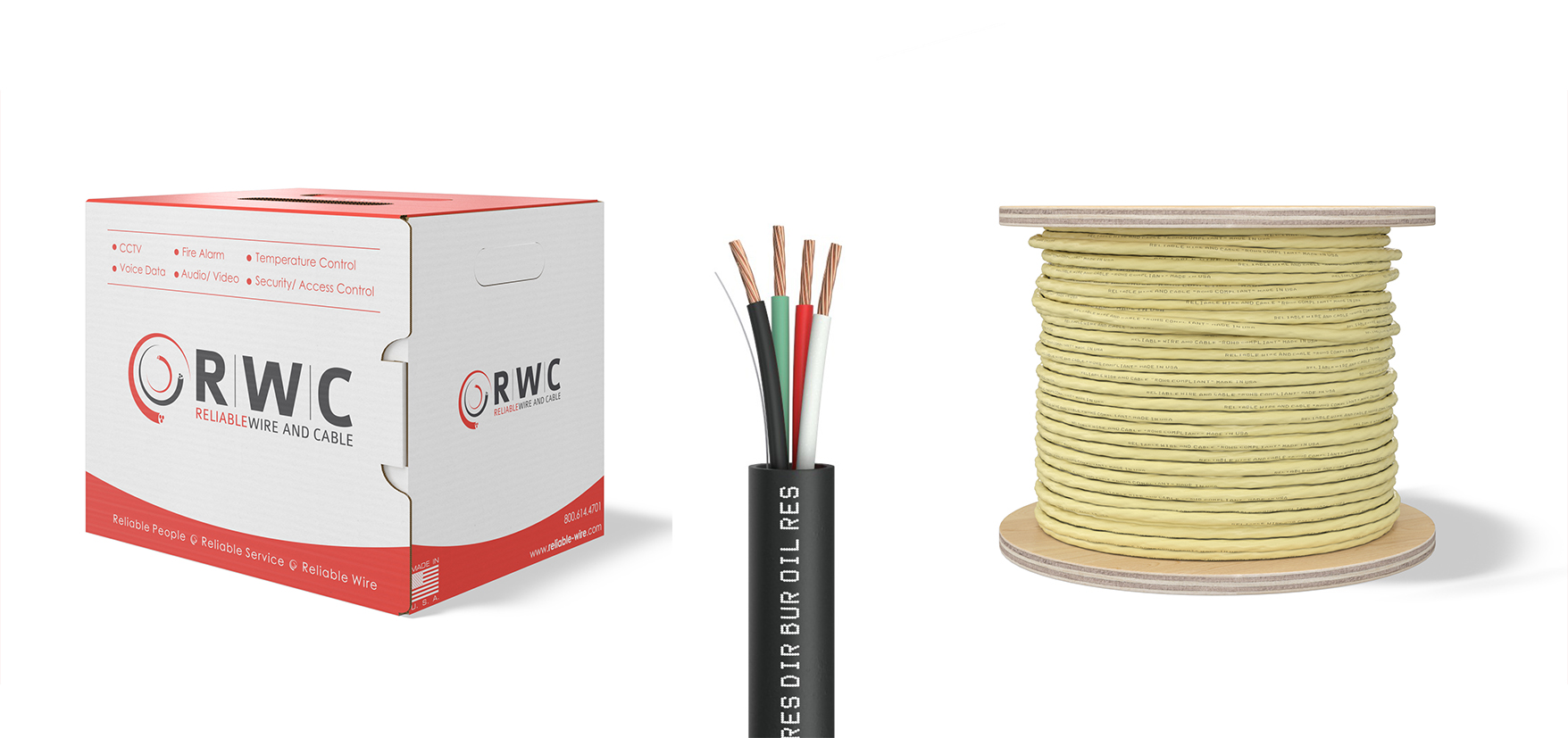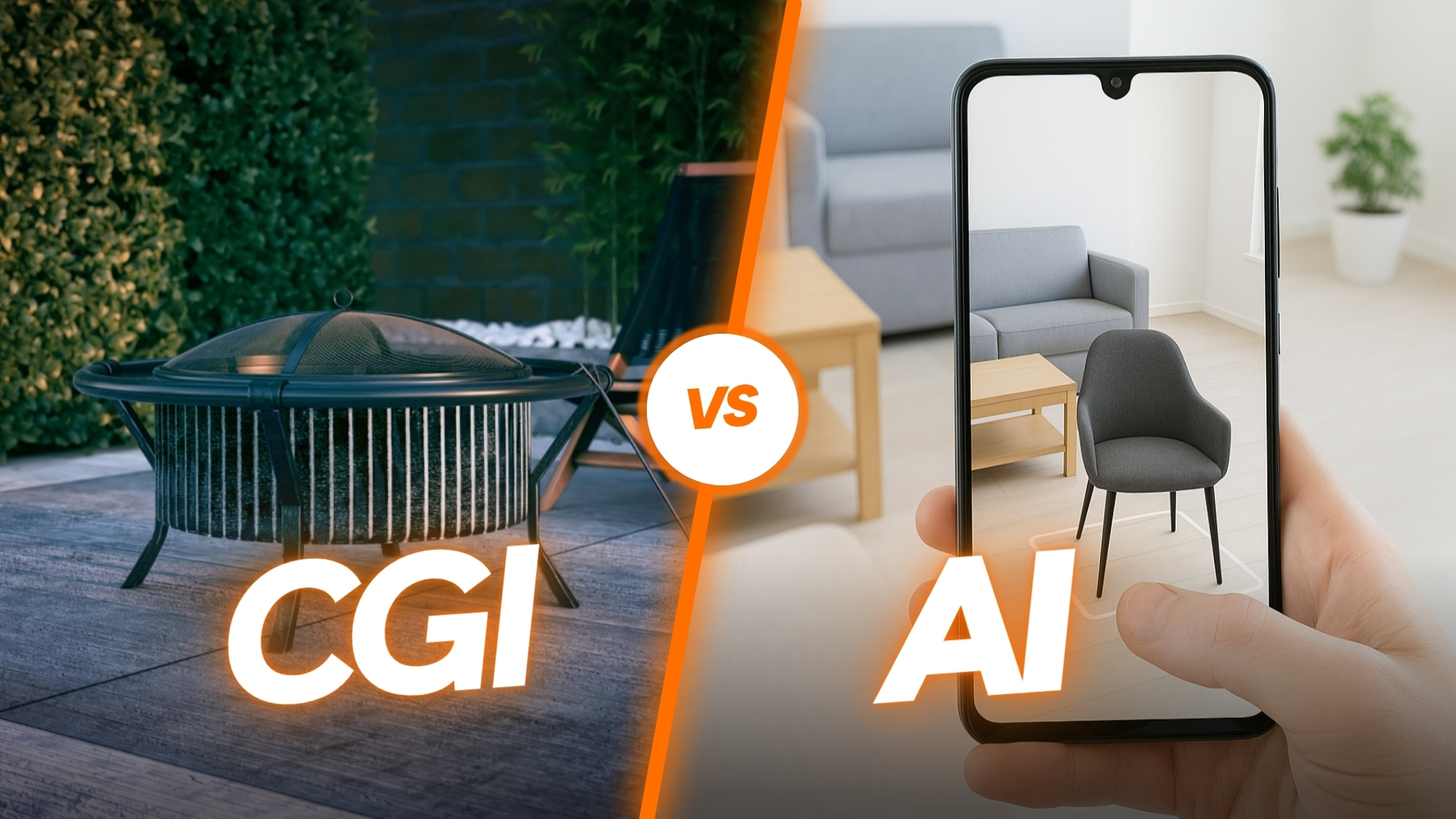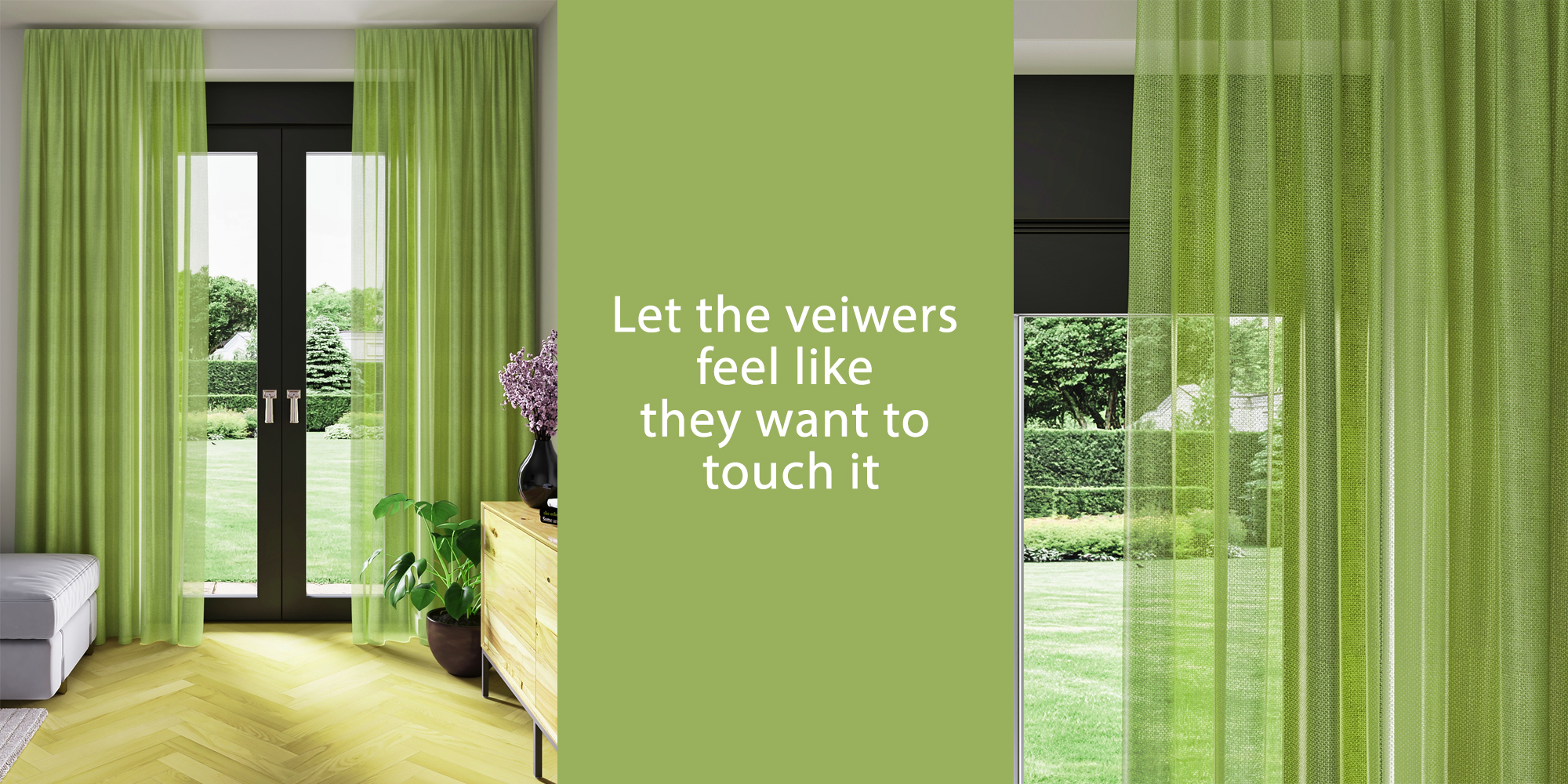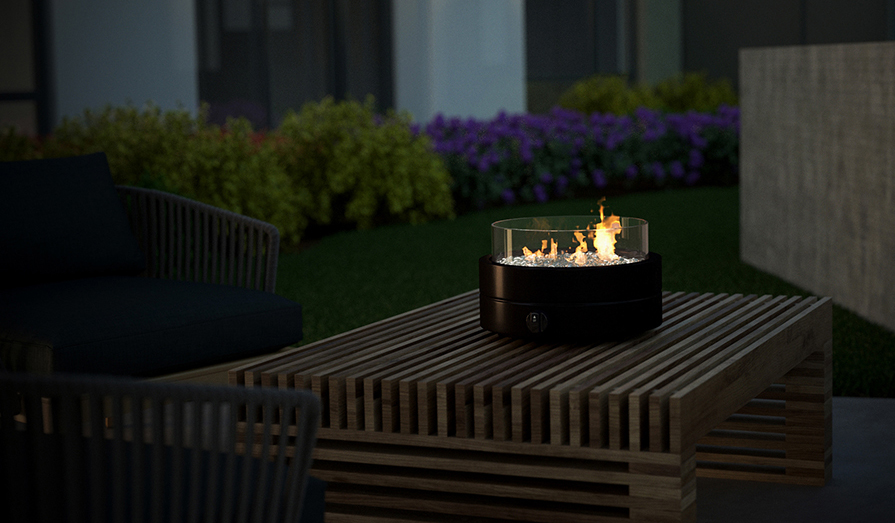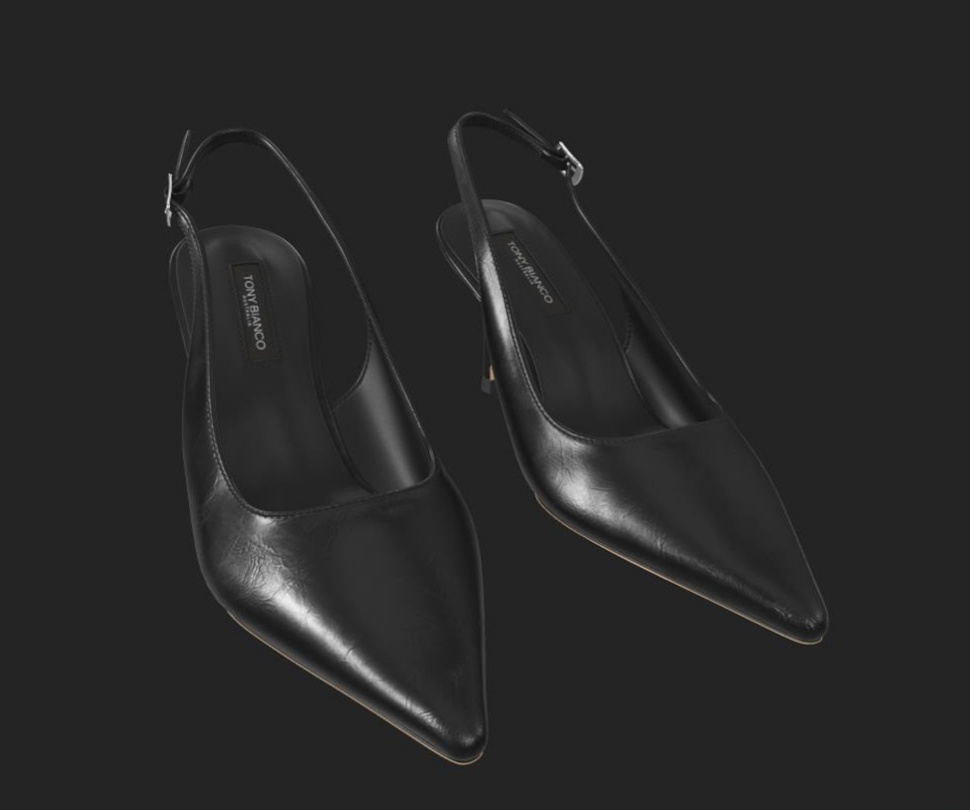What Are Architectural Visualization Styles? (Understanding the Concept)
Architectural visualization styles can be categorized into traditional hand-drawn (pencil, watercolor), modern digital (photorealistic, semi-realistic), and conceptual (collage, sketch, illustrative) types, each serving different purposes from rapid idea sketching to client approval. Popular styles include Photorealistic, aiming for photographic accuracy; Watercolor and Sketch for early concept communication; Collage for unique narratives; and Illustration for artistic and imaginative presentations. Different styles are not just aesthetic choices. They are strategic tools that influence how clients, investors, or planning authorities perceive a project.
Architectural Visualization Styles vs. Design Styles (Key Differences)
It is important not to confuse architectural visualization styles with architectural design styles.
- Architectural design styles describe the overall language of a building, such as modern, Gothic, classical, or minimalist. These define form, proportion, and cultural identity.
- Architectural visualization styles, on the other hand, describe how those designs are presented. A modernist home can be visualized in a photorealistic render to highlight finishes, or in a sketch-style image to emphasize the concept’s simplicity.
In practice, visualization styles often adapt to the design style. For example, a gothic cathedral concept may benefit from dramatic lighting renders, while a modern sustainable house might be best communicated with a realistic daylight context.
Why Visualization Style Matters in Architecture
Visualization style is not only about beauty; it is about communication and decision-making. Clients often find technical CAD drawings or floor plans difficult to interpret. A rendering style that matches their expectations can bridge this gap.
As ArchDaily notes, “Renderings can have different styles depending not only on the project itself but also on the specific targeted audience”. This means choosing the right style is as much about understanding the audience as it is about showcasing the design.
For businesses, visualization styles are marketing assets. A polished photorealistic rendering can sell a property before construction begins, while a quick clay render can help speed up internal approvals. For designers, the right style reduces misunderstandings and saves time in revisions.
Popular Architectural Visualization Styles and Techniques (and When to Use Each)
1. Photorealistic Rendering – Hyper-Realistic Detail for Final Presentations
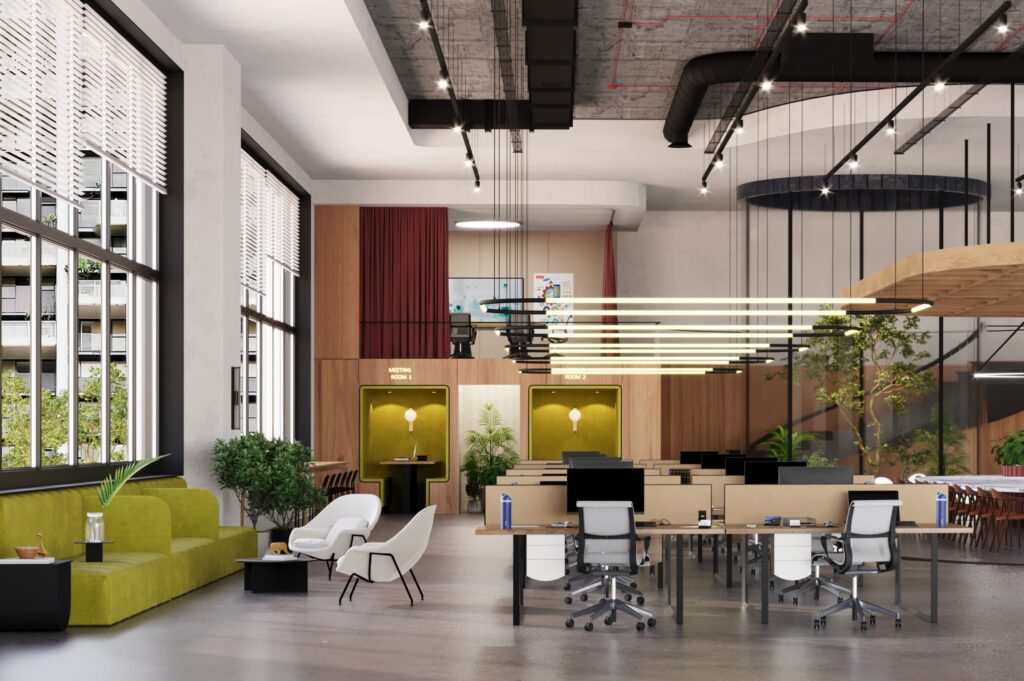
Photorealistic 3D rendering is the most widely recognized style in the industry. It focuses on lifelike details, accurate lighting, textures, and shadows. The result is often indistinguishable from photography. This style is especially effective in:
- Real estate marketing campaigns
- High-stakes client presentations
- Final approvals with planning boards
According to a report by a 3D rendering studio in 2025, photorealistic visuals significantly improve client confidence in a project’s outcome because they replicate how the space will look in reality.
2. Stylized Sketch & Watercolor Rendering – Hand-Drawn Aesthetic for Early Concepts
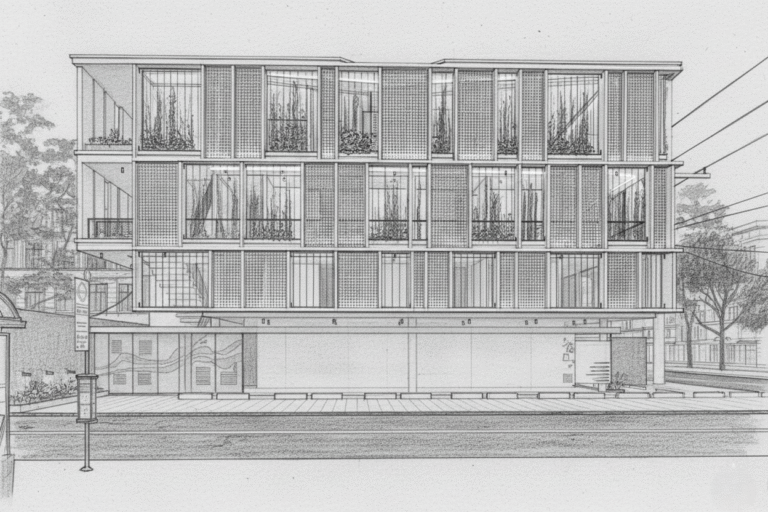
Before diving into realism, many architects use sketch-style or watercolor renderings to keep presentations loose and conceptual. This style communicates the idea of a project without overwhelming viewers with too much detail.
It works well in the early design stages, particularly when:
- Architects want feedback on form and massing
- The design is still flexible and open to change
- A softer, artistic presentation tone is desired
This approach connects back to traditional hand drawing, offering a sense of craftsmanship and personality that digital tools sometimes miss.
3. Clay Render(White Model) – Minimalist Massing Focus on Form & Light
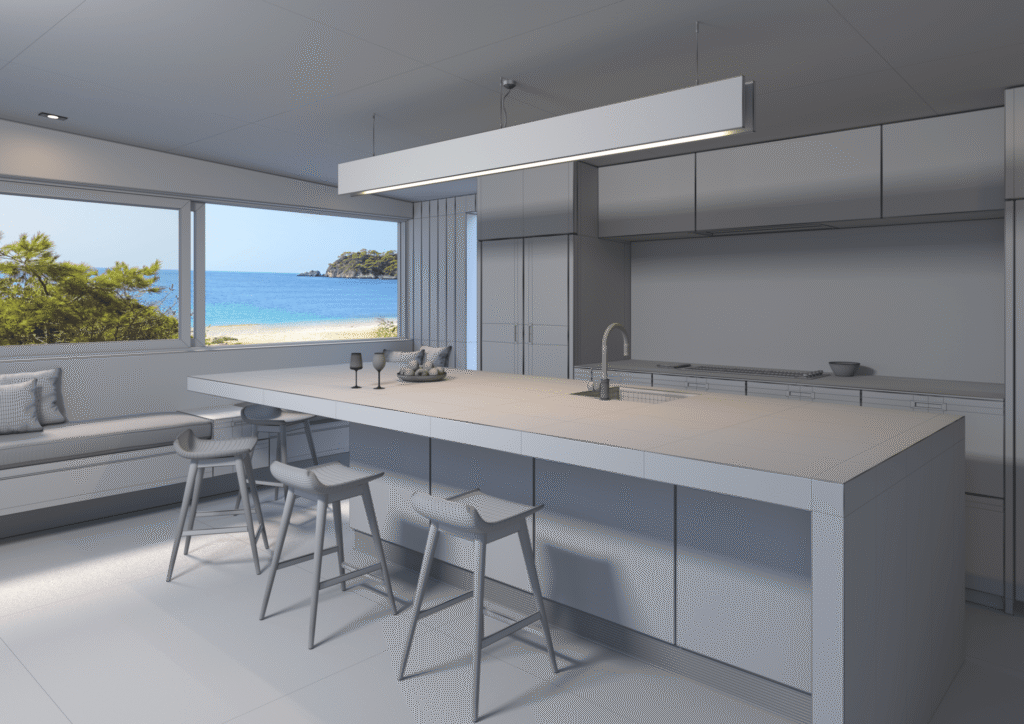
We have a dedicated blog on Clay renders, It also known as white models, strip away textures and colors to focus only on geometry, scale, and light. They resemble physical architectural models but are faster to produce digitally.
Benefits include:
- Highlighting form and structure without distraction
- Testing different lighting conditions
- Accelerating internal design reviews
Clay renders are especially useful in competitions or when exploring multiple design iterations quickly.
Collage and Mixed-Media Style – Artistic, Layered Visuals for Conceptual Impact
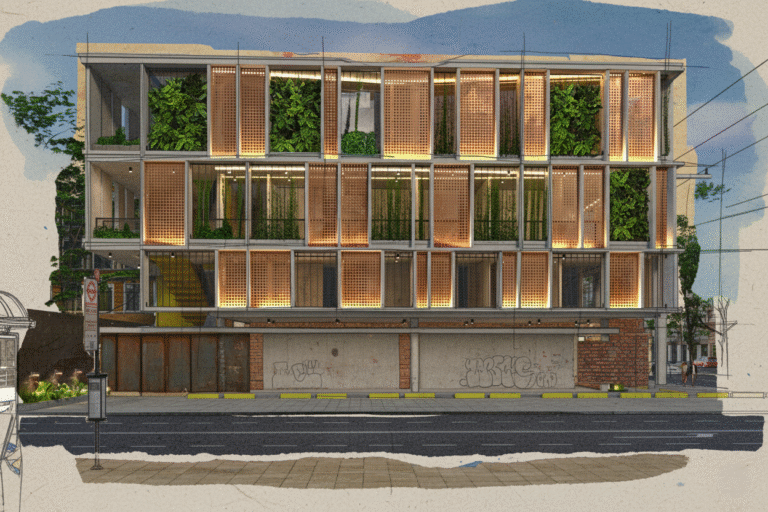
Collage-style visualization blends 3D renderings with photography, sketches, or textures. It has grown in popularity among young architects and creative studios because it provides a bold, artistic, and often playful presentation.
This style is ideal for:
- Concept presentations to creative audiences
- Marketing visuals for cultural or experimental projects
- Showcasing mood and atmosphere rather than technical accuracy
Collages also stand out in portfolios and competitions, where originality and artistic expression carry weight.
3D Animation & Flythroughs – Cinematic Storytelling of Architectural Spaces
Still images can only go so far. 3D animation and flythroughs allow viewers to move virtually through a building or landscape, experiencing spatial flow and functionality.
Animations are powerful tools for:
- Real estate sales and promotional videos
- Investor presentations requiring an emotional connection
- Explaining circulation in large or complex projects
A well-executed animation combines architectural accuracy with cinematic techniques like camera angles, depth of field, and sound design, creating an immersive narrative.
Interactive Real-Time Rendering – Game-Engine Powered, On-Demand Exploration
With advances in game engines like Unreal and Unity, real-time rendering has become more accessible. This style allows clients to explore designs interactively, changing viewpoints, materials, or even lighting in real time.
Real-time visualization is especially useful for:
- Live design reviews with clients
- Large-scale developments with many design options
- VR-enabled exploration of future spaces
While it requires more computing power and technical expertise, its flexibility makes it one of the fastest-growing visualization styles.
Immersive VR/AR Experiences – Virtual Walkthroughs and Augmented Reality Previews
Virtual Reality (VR) and Augmented Reality (AR) take interactivity further by placing clients inside the design. With a VR headset, one can walk through a house before it is built. With AR on a tablet, a building model can be projected onto a real-world site.
According to a Chaos and Architizer 2024 survey, more than 60% of architecture firms are planning to integrate VR/AR into their visualization workflows in the next two years.
Key benefits:
- Fully immersive client presentations
- Marketing experiences that stand out from competitors
- On-site design validation through AR previews
Want to see how 1 project can be shown in 3 different visualization styles? Watch this video
Trends in Visualization Styles in the age of AI
Technological breakthroughs, changing client expectations, and the need for faster, more immersive communication are increasingly changing architectural visualization. Professional must have to adopt those as soon as possible-
Real-Time Rendering Adoption and the Potential–Practice Gap
Real-Time Rendering allows instant feedback, making it possible to tweak materials, lighting, or viewpoints during live design sessions. Unreal Engine, Unity, Blender, Lumion, Enscape, Twinmotion, and D5 Render are the widely used tools for real-time style. Many firms struggle with hardware costs, software training, and integrating real-time workflows into existing pipelines.
Despite these challenges, a 2025 CGarchitect report highlighted that over 40% of firms plan to adopt real-time rendering as a core visualization tool within the next two years.
AI-Assisted Visualization Workflows and Generative Techniques
Artificial intelligence is increasingly part of the visualization process, from AI-powered denoising in render engines to generative tools that suggest design variations. AI speeds up repetitive tasks like texture cleanup and post-production while opening creative doors for concept exploration.
Yet, industry experts caution that AI should complement, not replace, human artistry. The value of architectural visualization lies not only in producing an image but in interpreting and communicating a vision.
Immersive Visualization (VR/AR) Moving Toward Mainstream Use
Once a niche tool, immersive visualization is becoming mainstream. Virtual reality (VR) offers clients the ability to walk through spaces long before construction, while augmented reality (AR) allows design overlays directly on a site.
The Architizer + Chaos 2024 survey found that more than half of respondents believe VR/AR will become a standard part of client presentations by 2026 (Architizer). Firms should mainly focus on rethinking how clients experience architecture.
Sustainable “Green” Visualization Focus in Design Presentations
With sustainability at the center of modern design, visualization styles are adapting to highlight eco-friendly choices. Renderings now often emphasize natural light optimization, green roofs, solar panels, or low-carbon materials. Clients want to see not only the aesthetics but also the environmental performance of projects.
Visualization that communicates sustainability clearly can be a powerful selling point, especially for developers targeting eco-conscious buyers.
Social Media-Oriented Rendering Styles for Shareable Content
Social media like Instagram, LinkedIn, and Pinterest influence architecture visuals. In addition to stills, firms increasingly create shareable stylized renderings. Surrealistic elements, bright colors, and short looped animations make designs more engaging online.
These designs can help organizations stand out in a congested digital world and reach more people, according to VisEngine.
How to Choose the Right Visualization Style for Your Project
There are more factors than artistic taste that affect which representation style is best. It has to fit with the goals of the project, the stage, and what the crowd wants.
Considering the Project Phase (Conceptual vs. Final Design Stage)
Early design stages often benefit from loose sketch, clay renderings, or conceptual rendering while final stages demand photorealistic accuracy. The wrong style at the wrong stage slows projects down.
Aligning Style with Audience and Stakeholder Expectations
There are different levels of detail that different parties need. Investors might want finished images, while city planners might want easy-to-understand graphs. Customizing the style makes sure that the word gets through.
Weighing Budget, Time Constraints, and Resource Availability
Real-time rendering and VR require more resources and money. Sometimes clay or sketch approaches are faster and cheaper. Matching ambition and resources prevents overpromising.
Mixing and Matching Multiple Styles for Maximum Impact
Using multiple styles can tell the finest tale. A project may begin with a clay massing model, then photorealistic images, and finally a VR walkthrough. These layers provide clarity throughout the design process.
Communicating Your Vision Clearly to the Visualization Team
If people can’t talk to each other, even the most advanced representation style doesn’t work. Giving clear instructions, examples, and goals helps make sure the style chosen works for the job.
Common Mistakes and Pitfalls to Avoid
While architectural visualization is a powerful tool, common missteps can undermine its effectiveness.
Using the Same Visualization Style for Every Project (One-Size-Fits-All)
No style fits all situations. A one-size-fits-all strategy tends to limit inventiveness and overlook project needs. According to SolidRender, context-specific style has a greater influence.
Picking a style that doesn’t fit with the project’s goals or audience
For instance, if you use a highly stylized artistic render in a real estate sales pitch, buyers might get confused because they expect realism. To avoid misunderstandings, make sure that style matches purpose.
Neglecting Accuracy and Function by Over-focusing on Aesthetics
Even though artistic effects or dramatic lights look good, accuracy is a must. The plan must be followed when it comes to sizes, materials, and how things fit together in space. If not, drawings could lead stakeholders astray.
Overlooking Budget/Timeline Limitations when Selecting a Style
Ambitious visualization choices without considering time and cost constraints often delay projects. Balancing aspiration with practical limits ensures smoother delivery and client satisfaction.
Using Professional Visualization Services (The 7CGI Advantage)
It’s good to know about the different types of visualization, but you need skill, experience, and the right tools to use them correctly. In this case, a professional visualization studio can help.
Tailoring the Visualization Style to Fit the Client’s Vision and Brand
Every project is unique. A cultural location may require an artistic collage, while a corporate office may require a photorealistic representation. Visualisation styles at 7CGI match the project’s design objective and the client’s branding to ensure consistency across marketing and presentation materials.
Access to Diverse Styles and Cutting-Edge Technology Expertise
Our team is fluent in a wide spectrum of visualization styles, from traditional sketch renderings to immersive VR environments. We also invest in advanced tools like Unreal Engine, V-Ray, and AI-powered workflows, giving clients access to the latest innovations in architectural visualization.
Consistent High Quality Renders with Efficient Turnaround Times
Deadlines in architecture and real estate are often tight. 7CGI combines a large, skilled team with streamlined workflows to deliver high-quality renderings on schedule without compromising detail or realism.
Guided Collaboration and Support from Design to Final Presentation
Strong results come from collaboration. Our process involves open communication, iterative feedback, and dedicated support so that the chosen visualization style matches exactly what clients envision.
Frequently Asked Questions (FAQ) about Architectural Visualization Styles
The most common styles include photorealistic rendering, sketch and watercolor renderings, clay models, collage-style presentations, 3D animation, real-time rendering, and immersive VR/AR experiences. Each serves a different purpose depending on project goals.
It depends on your project stage, audience, and objectives. Early design stages often use sketch or clay renders, while client presentations and marketing campaigns benefit from photorealistic or animated visuals.
Not always. While photorealism is excellent for final marketing and sales, conceptual or stylized renderings may be more appropriate in early phases where flexibility and creativity are key.
Yes. In fact, many successful projects combine styles—for example, starting with clay models, moving to photorealistic images, and finishing with a VR walkthrough for client engagement.
Due to changes of technologies and trends peoples now want to explore their architectute in more interactive and immeresive way with the help of VR and AR. And professionals want to faster their work by using AI tools. Together, they are shaping the future of how architecture is presented and understood.
Conclusion and Future Outlook
Architectural visualization styles are no longer only about how things seem; they are also strategic communication tools that help people make decisions, speed up approvals, and make marketing work. As technology becomes better, styles will become progressively more interactive, immersive, and able to change to fit different audiences.
Choosing the proper kind of visualization is very important for getting stakeholders involved and making projects clear and impactful. For people who work in visualization, the next phase of practice will be defined by staying ahead of trends like AI workflows, real-time rendering, and visuals that focus on sustainability.
At 7CGI, we combine creativity, technical know-how, and teamwork with a focus on the customer to make architectural 3D visualizations that not only look great but are also very useful for sales and communication. The field of architectural representation is changing, and we want your projects to be at the forefront of these changes.

